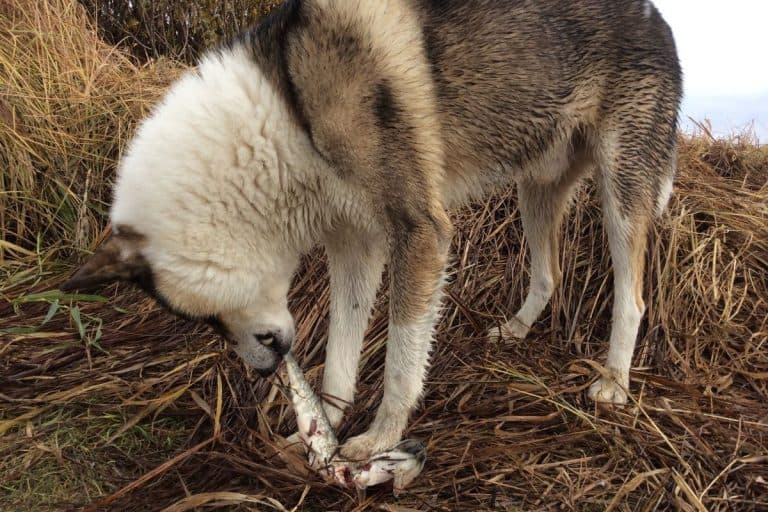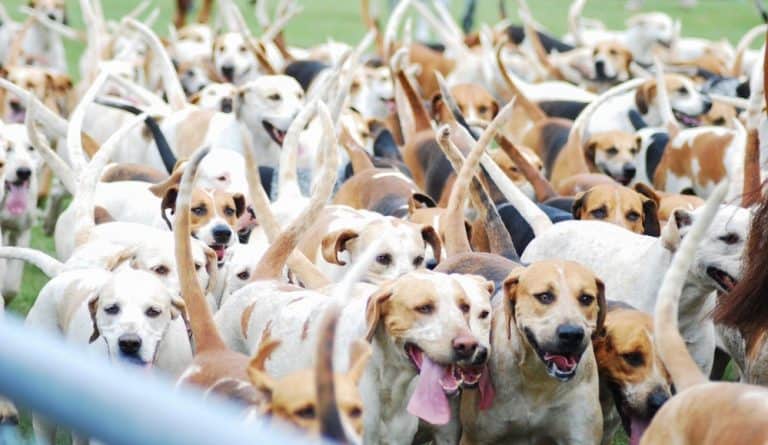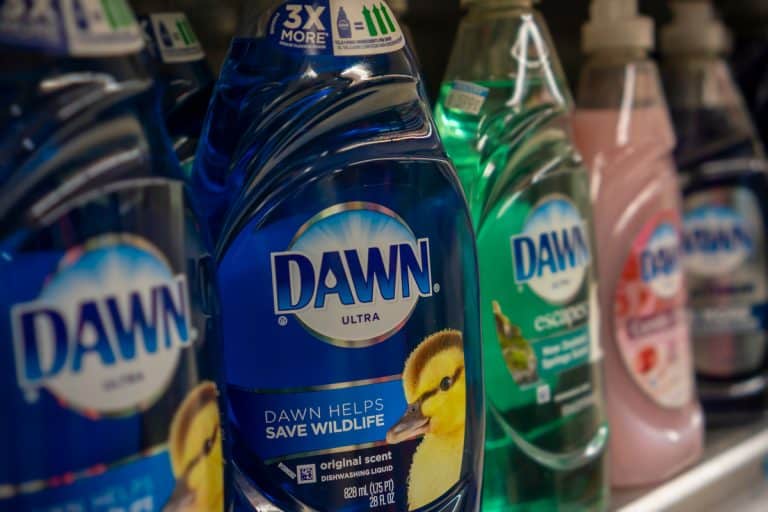Papillon Weight Chart – Size & Growth Chart
Papillons are quick and curious dogs of the toy breed variety. They are upbeat and athletic with a refined and beautiful appearance.
A Papillon weight chart will be able to help you monitor your dog’s development as he matures throughout his life.
People who own Papillons describe them as friendly, alert, and happy. Some Papillon ears are erect, but others have ears that are wing-shaped, which is why they got the name Papillon. Their name literally means butterfly in French.
Papillons are usually elegant and dainty with silky long coats in an array of colors. However, their base color is typically white.
They may look dainty, but they are hearty, and they thrive in both cool or warm climates. These little bundles of excitement, enjoy family time, and they are loyal.
When it comes to training them, they do very well because they are agile and intelligent, so they can perform money tricks.
When Is A Papillon Fully Grown?
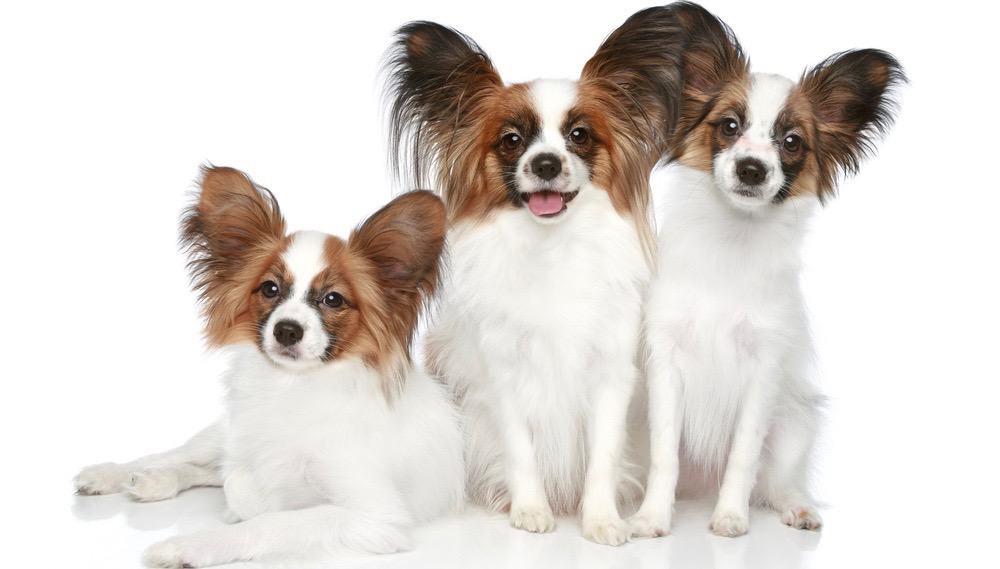
You may be wondering when this tiny breed becomes an adult. Many small breed dogs become full-grown when they are about 6 to 8 months old.
However, Papillons grow a bit slower, and they attain adulthood around 9 months to a year. Usually, this would be the average time it takes for medium breed dogs to attain adulthood.
Expect that your fully grown Papillon will still act like a puppy for some time. Ensure that while your Papillon is still developing.
You do not do anything to injure them because they tend to be delicate and have broken bones when they are still developing.
Papillon Weight Chart
The weight charts below will show you an estimation of what is ideal for your Papillon copy throughout his development.
It works by giving the average scores of Papillon at a certain age in their growth. Use this Papillon growth chart as a guide for what you can expect your puppy to weigh.
Understand that many factors can determine your dog’s weight throughout his life. For instance, his biological makeup, how much he exercises, and what he eats, all play a role in deciding his weight at any given time.
There will be columns that list your dog’s age that should be matched with the average weight that your dog should be based on research and Papillons that had their weights documented.
For this chart to work for you, you must be able to accurately tell your dog’s age and also measure him to compare with the weights on the charts.
In many cases, the figures on the charts are different from the measurements of your dog but don’t pay too much attention to this. Simply visit your veterinarian to make sure that your dog’s health is in order.
Papillon Puppy Weight Chart
| Age | Weight (lbs) | Weight (kg) |
|---|---|---|
| 3 Months | 3.5 - 4.4 lbs | 1.6 - 2 kg |
| 4 Months | 4.5 - 5.7 lbs | 2 - 2.6 kg |
| 5 Months | 5.7 - 7.0 lbs | 2.6 - 3.2 kg |
| 6 Months | 6.3 - 7.9 lbs | 2.8 - 3.5 kg |
| 7 Months | 6.7 - 8.3 lbs | 3 - 3.7 kg |
| 8 Months | 7.2 - 8.9 lbs | 3.2- 4 kg |
| 9 Months | 7.5 - 9.3 lbs | 3.4 - 4.2 kg |
| 10 Months | 7.6 - 9.7 lbs | 3.5 - 4.4 kg |
| 11 Months | 7.8 - 9.8 lbs | 3.6 - 4.5 kg |
| 12 Months | 7.9 - 9.9 lbs | 3.7 - 4.6 kg |
Papillon Growth Chart – What To Expect
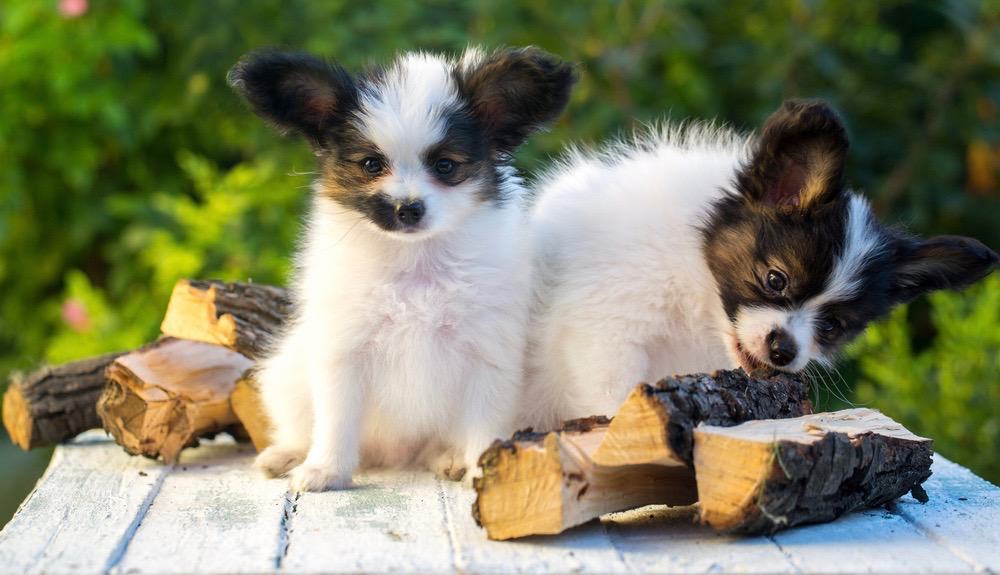
Birth – 2 Weeks
Your Papillon puppy will be in a delicate state, so you need to ensure that you are aware of where he is at all times and that he is safe.
However, this does not mean that you should handle him too much because this may cause the mother to reject him.
He needs his mother’s warmth and milk more than anything right now. Expect that he will spend most of his time asleep. They also grow a lot during this time.
3 Weeks – 12 Weeks
At this time you should think about trying to navigate the many changes that will be undergone by your Papillon puppy.
One of such changes is the moving from milk to solid foods. Understand that’s your dog needs to get used to kibble or whatever type of food you gave him.
They will continue to grow, but nutrients are vital to ensure that he gets the best food to live. At the end of this time, the male Papillons usually weigh between 3.5 to 4.4 lb while their female counterparts are slightly smaller weighing 3.3 to 3.9 lb.
4 Months – 9 Months
Continue to monitor your Papillon during this stage as he will be moving closer to adulthood. Your Papillon will most likely have his first heat cycle so look out for the behaviors associated with mating.
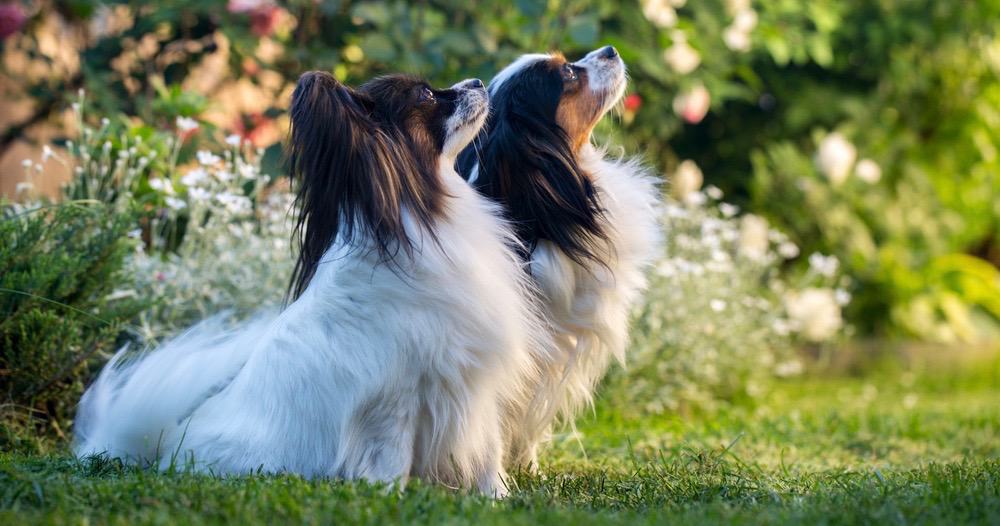
When the males are about 6 months they will most likely weigh around 6.3 – 7.9 pounds. The female usually weighs around 5.7 – 7.2 pounds.
10 Months – 18 Months
During this period, your Papillon pup would have most likely attained adulthood. They will still be playful and some of them may still gain muscle.
The one-year-old male Papillon will usually weigh between 7.9 and 9.9 lbs while the female is between 7.5 and 9.1 lbs.
Adult
In adulthood, your Papillon puppy would have fully matured in both his body and his temperament. He would no longer look like a puppy, and he will not be as playful as he was in previous months.
Nutrition is crucially important because you do not want your Papillon puppy to gain weight and have health issues. So watch what you feed him and engage him and vigorous exercise.
How Big Do Papillons Get?
It is a reasonable concern for an owner to have about the size of their Papillon puppy according to the American Kennel Club a Papillon will usually reach a size of 8-11 inches tall in adulthood, and they would usually weigh between 4 and 9 pounds. This is not surprising because Papillons are a toy breed.
As is typical with dogs, the males are slightly larger than the females when it comes to both height and weight.
The females also usually reach their final size before the males.
They would usually get to their full size between 9 and 12 months and then be mentally develop between 12 and 14 months. At their full size, they are usually small enough to fit in your handbag.
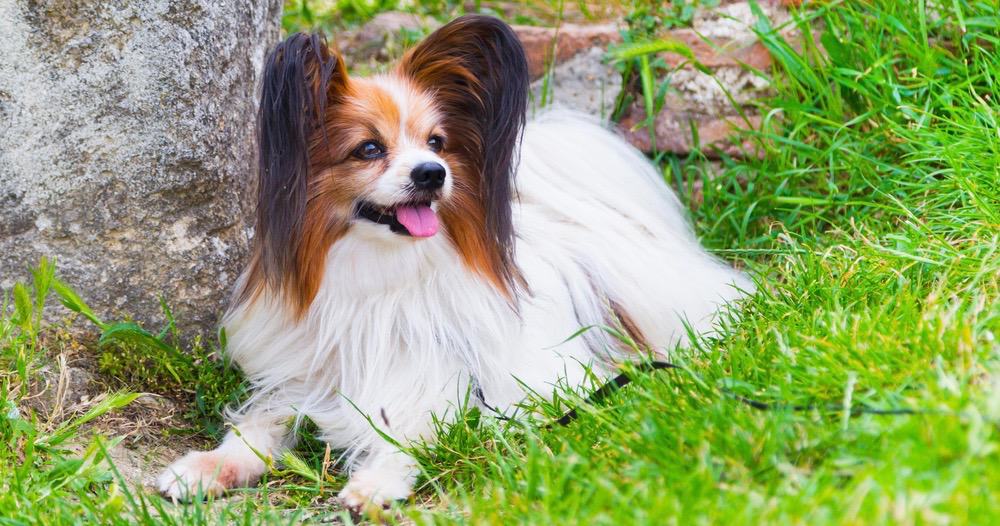
Look at your dog’s paws, and you would be able to gauge his final size based on how much growing he would have to do.
The paws would be a bit bigger and the dog would have to grow into their paws. You can also look at their parents. Due to genetics go Papillon would probably be the average size of both his parents.
Will Neutering/Spaying My Papillon Affect His Growth?
Wait until your Papillon puppy is at least 1-year-old before you arrange to have them neutered or spayed because there may be serious health consequences.
Because of the hormones in the body associated with growth, there may be serious health issues as it pertains to the joints of male dogs especially.
For females, it may be more appropriate to have them spayed because they may not be mature enough to handle puppies at a very young age. so watch them carefully when they are in heat.
Neutering or spaying comes with risks to your puppy because of the surgery and post-op recovery, but there are valid reasons to spay your dog that could actually benefit both of you.
Papillon Size Chart
It is wise of you as a dog parent to monitor your Papillon puppy bugs you should understand that there is a proper way to go about it. Many owners try to document their dog’s height and weight.
A dog’s height is measured by looking at the space from the floor up to the withers. The weather is the highest point on your dog’s shoulder blades.
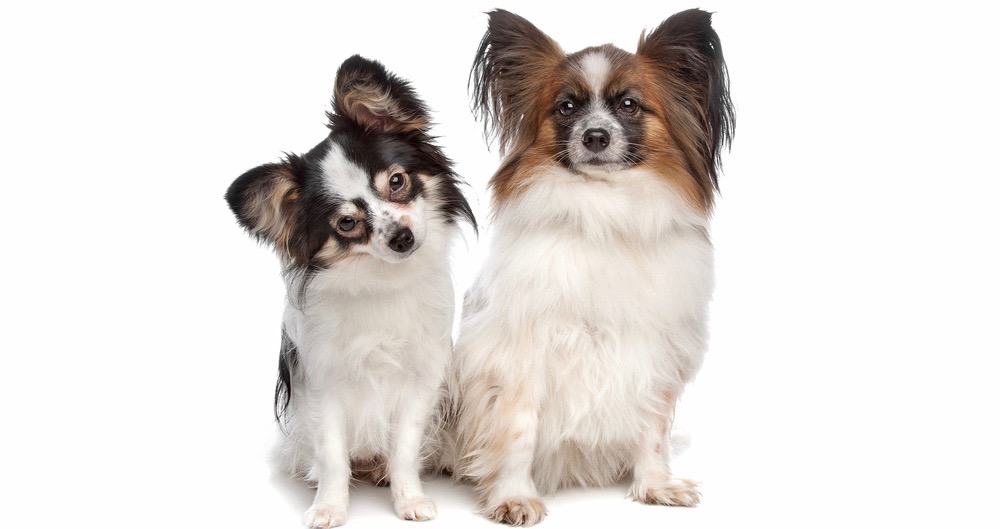
All you need to do is make sure he is standing up straight and used the tape and measure from the ground straight up to the withers. Males are usually 8 to 11 inches and females are about 7 to 10 inches.
Chihuahua vs Papillon Size
There are a few key differences between Papillons and Chihuahuas. There are a few similarities as well, such as the fact that they are both small breed intelligent dogs with loads of character.
However, Papillons are a bit larger in weight and height. They are also easier to train than Chihuahuas.
Papillon males usually weigh between 8-10 lbs while females would weigh 7-9 lbs. When it comes to height, the males stand at 8-11 inches and the females at 7-10 inches. Chihuahuas usually weigh 2-6 pounds and stand at 6-9 inches
Factors That Affect Papillon Growth
Genetics & Gender
When it comes to your dog’s size and rates of growth, gender and genetics are big factors.
We know that female dogs are slightly smaller than males and hormones are different in male and female dogs which affects their growth.
Additionally, your dog’s parents have some impact on his development because of genetics and hereditary factors.
For example, there may be hereditary diseases that your dog is prone to because his parents suffered from the same illness.
Nutrition
See all Papillon puppies will be positively affected by a dog food of high quality. Make sure that when your Papillon is at his full weight, he doesn’t begin to pack on the pounds because that may lead to serious health issues here.
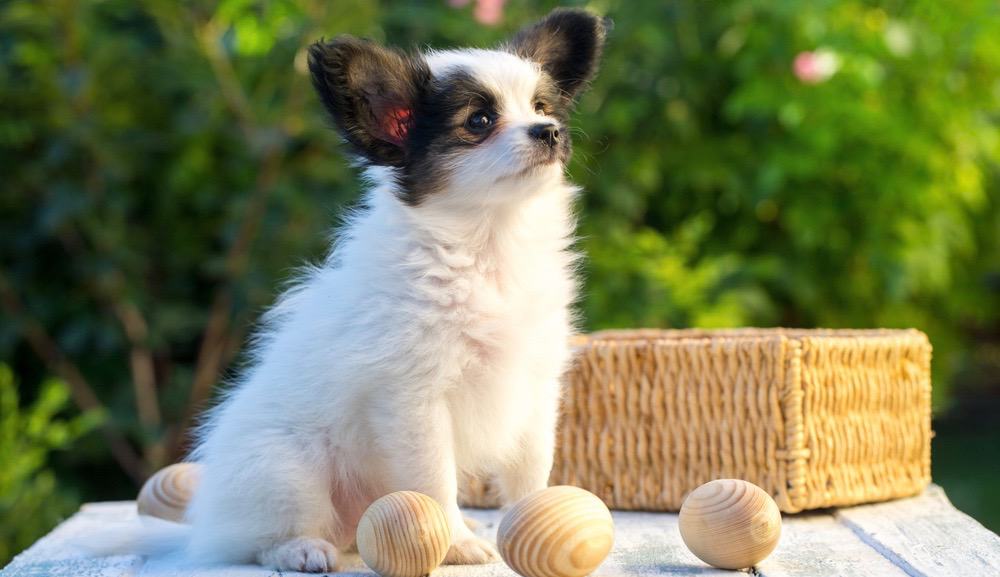
Foods high in protein are best for your Papillon, especially during his development. He also needs healthy fats as well as fiber that can be found in fruits and vegetables.
Remember as well that’s too many treats can lead to obesity in your dog.
Physical Activity & Health
Your Papillon pop will enjoy quality time while doing outdoor activities like walking or jogging.
Keep in mind about our smaller puppies, so while exercise is very good for them, you should not overdo it especially when they are very young.
Toy breeds like the Papillon actually require more exercise than other breeds. But Papillons typically need a bit more exercise than most because of their size.
They are full of energy, but they make great apartment dogs, and if a small area is all you have you may be able to do fun activities in the house.
What If My Papillon Is Not The Right Weight
Your Papillon should be the right weight if he is receiving proper nutrition and is allowed to exercise regularly.
He has a lot of furs, so it may not be evident just from looking at him. You can run your hands across his stomach, and you should feel his ribs covered by a layer of fat and this is totally normal for a dog of a healthy weight.
As a rule of thumb, you should feed him a ¼ to a ½ cup of dry high-quality dog food that has a lot of protein and digestible fiber.
Make sure that the kibble bits are not too large. Keep in mind that his weight is hinged on his exercise level, age, metabolism, and build.
How Much Does It Cost To Own A Papillon?
You can expect to pay around $500-$1,900 for your Papillon puppy, and an average price of $1,000.
The expenses for the first year may be in the ballpark of $3,440 and $1,015/year thereafter. Throughout your Papillon’s lifetime, you can expect to spend $17,650.

You will be paying for food, grooming, medical visits, spaying or neutering, microchip installation, treats, registration, insurance, supplies, and any other miscellaneous cost.
There are also instances where you would need to board your dog if you will be out of the country for a while.
Papillon Genetics And Common Health Problems
When Papillons are very young they are gutsy and tough, but you should take special care of them because they are also delicate.
You should definitely watch out for them around children, heavy furniture, larger animals. Health problems could be caused by simple accidents.
They are also known to suffer from hip dysplasia hypothyroidism and elbow dysplasia, look out for these diseases and engage them in exercise while feeding them healthily to avoid them from developing serious diseases.
Final Words
The Papillons are eager and intelligent and love most of all to please their human parents. Usually, they may take a bit longer to be house-trained because they are a smaller breed, but Papillons take very well to training.
Have them socialized and trained as early as possible and this will make your life a lot easier. You will have less cleanup to do, and your dog will actually understand what is required of him.
Papillons are companion dogs so keeping your company is second nature to them as long as you treat them well. You will have a faithful companion for life with you little Papillon.



